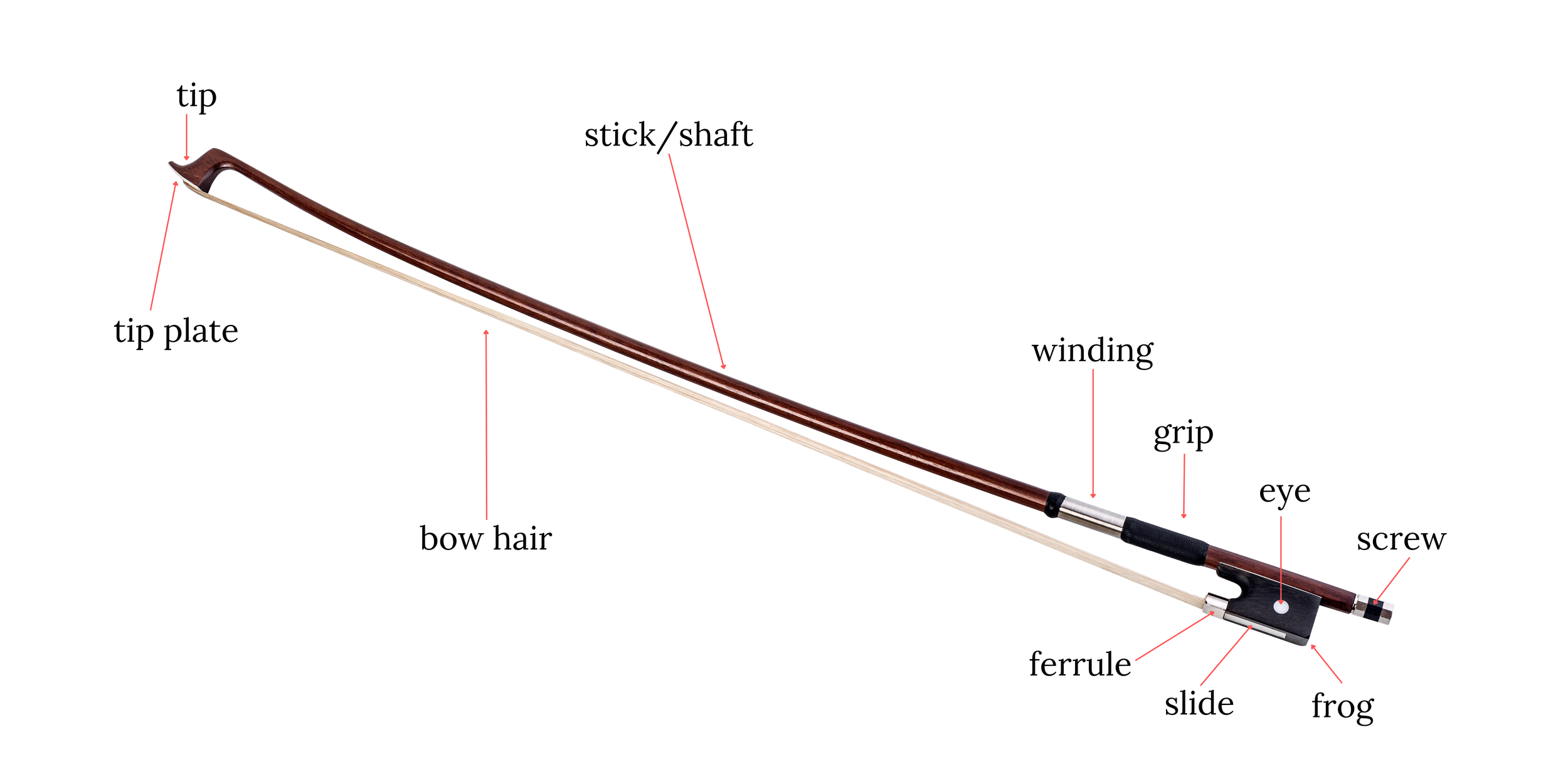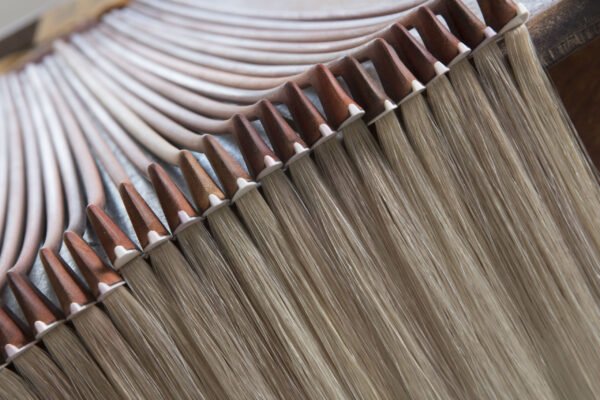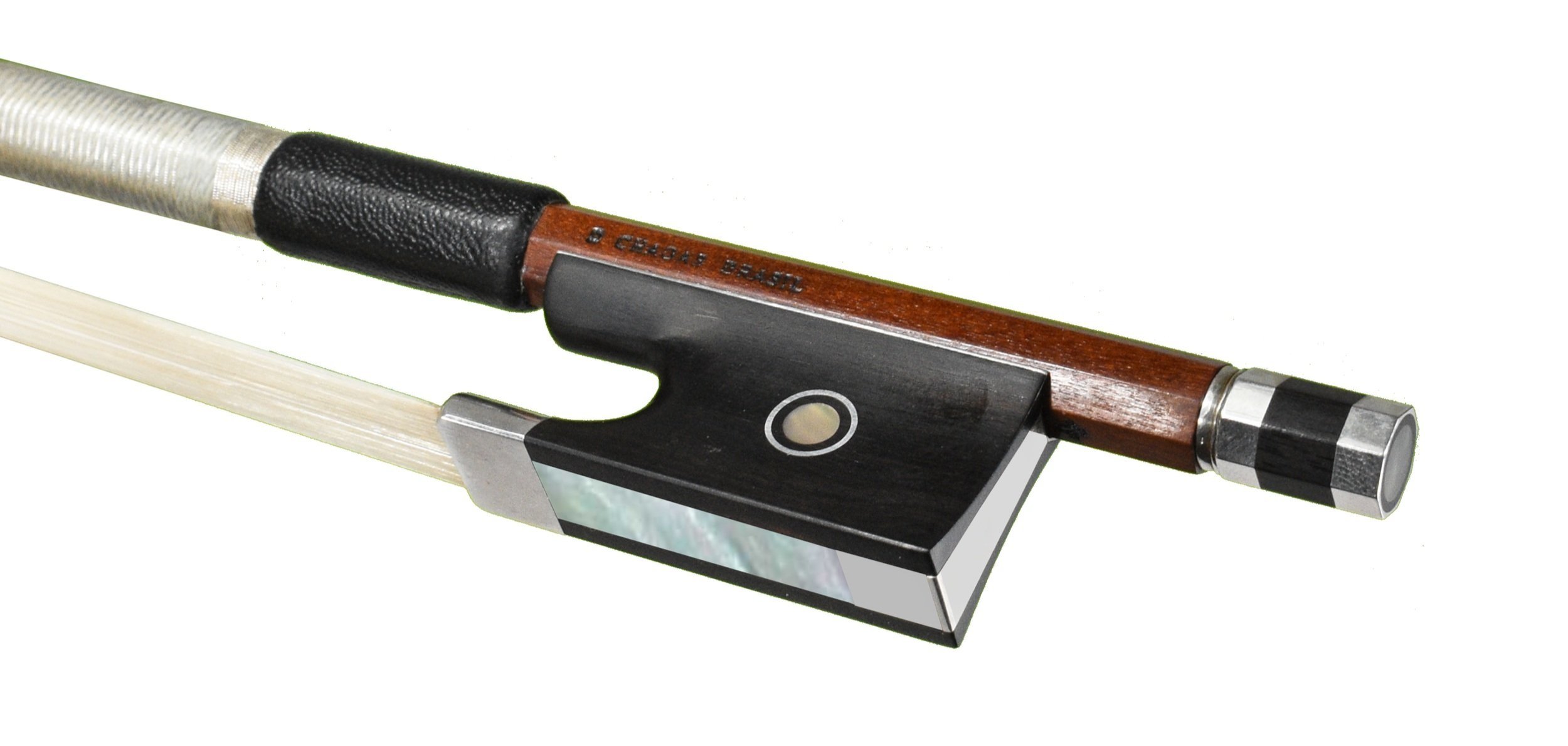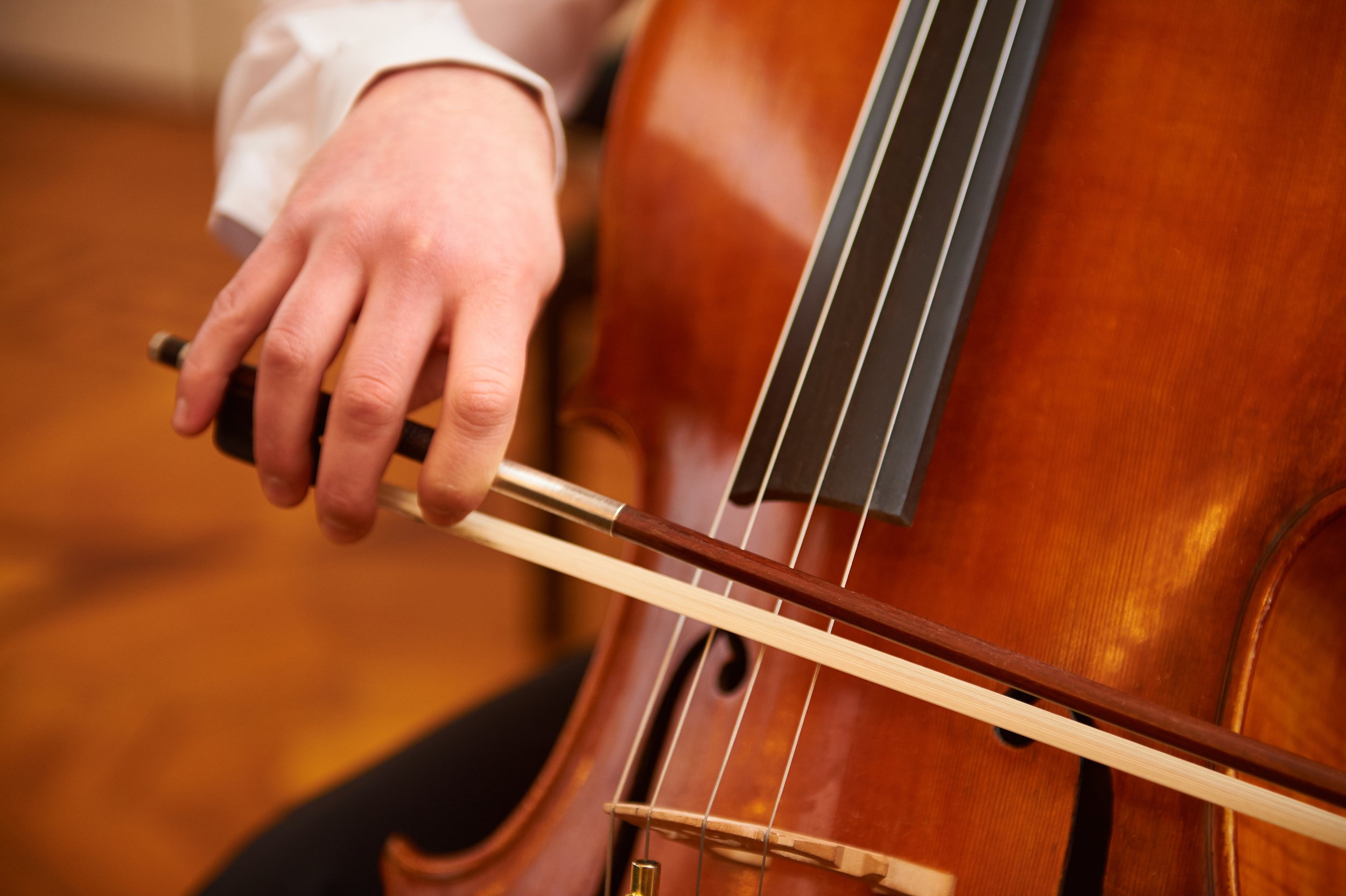Bow Anatomy
Although variations in weight, length, shape and size are specific to each type of bowed string instrument, modern violin, viola, cello, and bass bows are very similar in their basic construction. Understanding the anatomy of the bow will help string players care for and maintain their bows, as well as be more precise when selecting the best bow for their playing.
PARTS OF THE BOW
Although basic construction for all modern string instrument bows is similar, each violin, viola, cello or bass bow is unique.
Stick / Shaft
The stick of the bow is curved inward. Balance is crucial for bows, and each bow should have a natural balance point a quarter of the length up from the frog end. Sticks should be flexible, as to be responsive when playing at different pressures. A more flexible bow may produce a more expressive and nuanced sound. Such bows may also be harder to control, and require skill and finesse to use. More rigid bows do not allow for as much expression, although more direct and easier to control.
Bow sticks are crafted out of a variety of materials these days. For a very long time, Pernambuco wood was prized for it’s prime qualities, flexibility, durability, and sound production. Tragically, it is now endangered and is no longer used, although many vintage and antique bows are still available. Ipe wood has come up in its place, and carbon fiber has become very popular amongst players as well.
Hair
Horse hair is traditionally and most commonly used for bow hair, though synthetic hair has come into production in recent years. Horses from colder climes are preferred, as they are believed to have the strongest hair. Darker horsehair is coarser than lighter hair, so different colors of hair can be used to produce more or less grip or attack.
Violinists and violists use white, ivory, or golden hair almost exclusively. Lighter hair lends itself to more subtly and nuance on upper string instruments. Lower string players, cellists and bassists, will often use a salt-and-pepper mixture.
Coarser black hair is able to grab the heavier strings of lower instruments, like basses better, so adding it with lighter hair can allow the bow to better grab the larger strings of the lower instruments. Some upper instrument folk and fiddle players may even prefer salt and pepper or darker bows for their potential to produce a louder, bigger sound. Although many say the distinction is minimal, those who play with black or salt and pepper hair bows do so with intention.
Tip & Tip Plate
Bow hair is connected to the bow stick at each end. These ends have specific construction. The tip connects the hair at the end opposite of where the player holds the bow in hand.
Tip construction is crucial to the structural integrity of the bow as well as for balance and even playing. The tip plate, is the protective cover of the tip, where the bow hair is connected, and is made either from bone, metal, or synthetic materials.e it stand out
Frog, Eye & Ferrule
The frog lies opposite of the tip, where players hold the bow. The frog is commonly made from ebony wood, though that will likely change in the near future, due to scarcity and ethics in regards to labor rights. The frog serves two main purposes. For one, it creates space between the hair and the stick to curve inwards without contacting the hair which would mute and deaden sound. It also holds the mechanism for tightening and releasing the bow hair.
The slide serves to hold the bow hair in place in the frog. They are removable, often decorative, and sometimes made of pearl or shell.
The ferrule lies at the bottom of the frog. It is removable, and protects the joining of the bow hair to the frog.
The eye is inlaid in the frog as a dot of pearl, silver, shell or other decorative material.
The screw is used to tighten or loosen the bow hair, and is located at the bottom end of the bow.
Winding or “lapping” is usually made from nickel, silver, tinsel, faux whalebone, or sometimes even gold. The grip, or thumb leather sits just above the frog and serves to protect the stick from the wear of the player’s hand, as well provide some comfort for the hands of the player.
Although seemingly minute details, all of the materials used affect the weight, balance, flexibility, sound, and overall quality and playability of the bow. A truly fine bow is a piece of beautiful and functional art. The bow is the sum of its parts.







